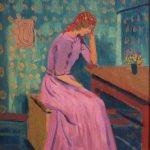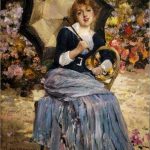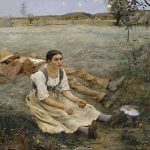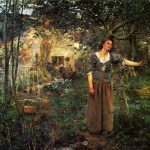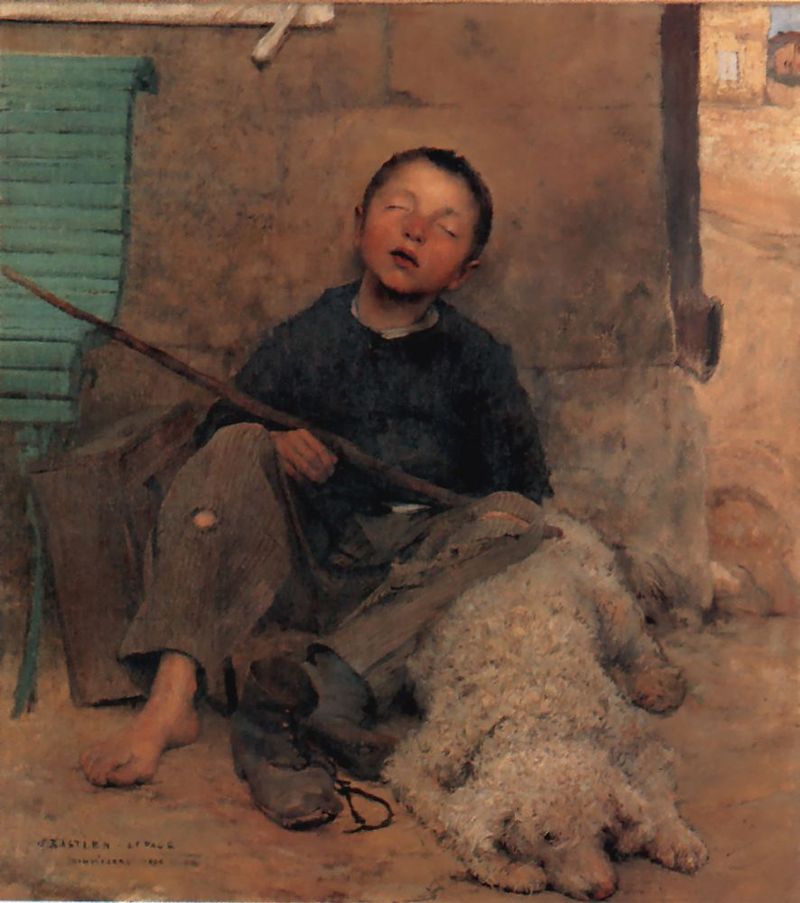
Bastien-Lepage was born in the village of Damvillers, Meuse, and spent his childhood there. Bastien’s father grew grapes in a vineyard to support the family. His grandfather also lived in the village; his garden had fruit trees of apple, pear, and peach up against the high walls. Bastien took an early liking to drawing, and his parents fostered his creativity by buying prints of paintings for him to copy.
Jules Bastien-Lepage’s first teacher was his father, himself an artist. His first formal training was at Verdun. Prompted by a love of art, he went to Paris in 1867, where he was admitted to the École des Beaux-arts, working under Cabanel. He was awarded first place for drawing, but spent most of his time working alone, only occasionally appearing in class.
Nevertheless, he completed three years at the école. In a letter to his parents, he complained that the life model was a man in the pose of a mediaeval lutanist. During the Franco-Prussian war in 1870, Bastien fought and was wounded.
After the Franco-Prussian War
After the war, he returned home to paint the villagers and recover from his wound. In 1873 he painted his grandfather in the garden, a work that would bring the artist his first success at the Paris Salon.
After the success of Haymaking, Bastien-Lepage was recognized in France as the leader of the emerging Naturalist school. By 1883, a critic could proclaim that “The whole world paints so much today like M. Bastien-Lepage that M. Bastien-Lepage seems to paint like the whole world.” This fame brought him prominent commissions.
His Portrait of Mlle Sarah Bernhardt (1879), painted in a light key, won him the cross of the Legion of Honour. In 1879 he was commissioned to paint the Prince of Wales. In 1880 he exhibited a small portrait of M. Andrieux and Joan of Arc listening to the Voices (now in the Metropolitan Museum of Art); and in the same year, at the Royal Academy, the little portrait of the Prince of Wales.
In 1881 he painted The Beggar and the Portrait of Albert Wolf; in 1882 Le Père Jacques; in 1885 Love in a Village, in which we find some trace of Gustave Courbet‘s influence. His last dated work is The Forge (1884). Source: Wikipedia.

